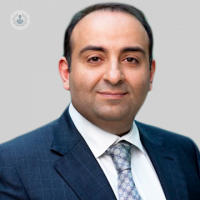What is the difference between Botox and dermal fillers?
Autore:Are you worried about wrinkles? There are a number of treatments available nowadays to help preserve a youthful appearance in skin, and two of the most well-known of these are Botox and dermal fillers. Many people assume these are the same, or at least similar, but there are several important differences between the two, and if you are considering cosmetic treatment, it is important to know which is the right treatment for you. Expert ENT and facial plastic surgeon Mr Kambiz Golchin guides us through the difference between Botox and fillers:

What are dermal fillers?
Dermal fillers are substances which are injected into the skin to fill it out, giving it a plumper, fuller appearance. It can be used to remove wrinkles and smile lines, and also to give volume to the cheeks or lips. Sometimes, they might be used for hand treatments, or to diminish scars.
There are several different types of dermal filler:
- Hyaluronic acid – a naturally occurring molecule which binds to water in the skin and helps to keep it looking full. The hyaluronic acid in fillers is synthesised, and tops up the natural hyaluronic acid in our skin when our bodies age and produce less naturally. The effects last about 4-6 months.
- Collagen – another substance found naturally in our bodies. Collagen and elastin work together to maintain the skin’s elasticity and keep it firm and young-looking, but the natural collagen in our skin breaks down as we age. Collagen fillers replace these lost proteins for 3-4 months.
- Calcium hydroxylapatite – a temporary gel, which lasts about 18 months.
- Poly-L-lactic acid – a man-made substance. This filler lasts about 2 years.
- Polymethylmethacrylate beads – these are the only available kind of permanent filler, but carry the biggest risk of complications.
What is Botox?
Botox is, in essence, a muscle relaxant. Short for “botulinum toxin”, it is a protein made by Clostridium botulinum bacteria, and when injected into facial muscles, it causes them to relax, reducing the appearance of nearby dynamic wrinkles. The results are not immediate, usually taking about two weeks to become noticeable. Botox generally lasts between 3-6 months, and then another injection will be needed.
Botox vs. fillers
Botox:
- Works by relaxing muscles that cause wrinkles.
- Used to treat dynamic wrinkles.
- Treats moderate to deep frown lines in the forehead, between the eyebrows (glabellar lines) and around the eyes (crows’ feet).
- Injected into and affects muscles.
- Side-effects are rare; minor bruising can happen.
Fillers:
- Works by filling out the skin.
- Used to treat fine lines caused by collagen breakdown.
- Mainly used on the lower face, e.g. around the lips.
- Injected into and affects skin.
- In rare cases, patients may be allergic to the filler and suffer a reaction. For this reason, the practitioner should be a trained professional specialising in the procedure, and be able to respond to any reaction.
Both:
- Have short procedure times (usually under 45 minutes)
- May cause a little bruising, swelling, or irritation around the injected sites in the immediate aftermath of the procedure, but no long-term side effects bar allergies or infection.
- Pregnant and breastfeeding mothers are advised against both Botox and fillers.
If you are considering either Botox or dermal fillers, consult your doctor or a specialist, who will be able to advise you on the ideal procedure for you.



